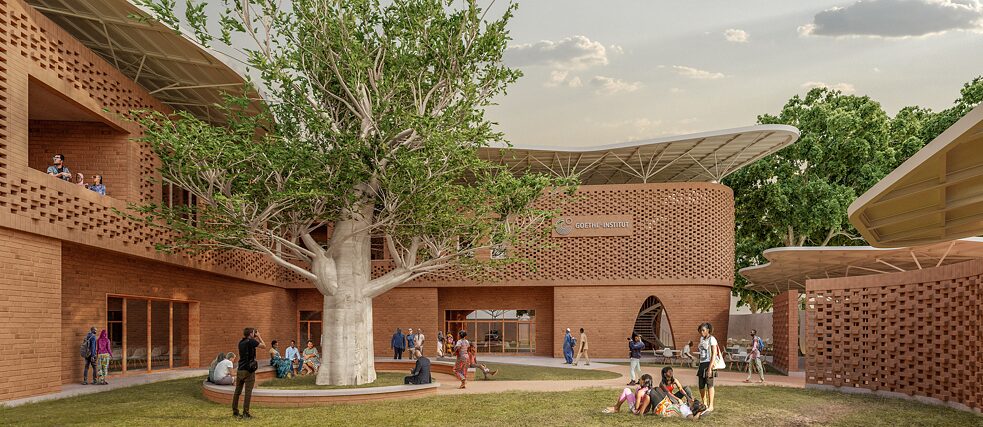Sustainable architecture: the new Goethe-Institut in Dakar
Back to the Future

The Senegalese capital Dakar is the setting for the new Goethe-Institut designed by architect Francis Kéré from Burkina Faso. It embodies architecture as a cultural, societal and climatologically evolved term.
By Ruth Helmling
The award-winning architect can remember his first school well, even almost fifty years later: “It was dark. And hot!” Francis Kéré, who now lives and works in Berlin, grew up in a village in rural Burkina Faso with his 13 siblings. At the age of seven, his parents sent him to live with relatives in the nearest town so that he could go to school. His awareness of and sensitivity to the traditional architecture of his homeland began in his childhood and continued after he left school. In the 1980s he was awarded a scholarship to come to Germany, where he initially trained as a carpenter before studying architecture at the TU Berlin. Even before completing his studies, he returned to Gando, where he built a primary school – of traditional materials, with a modern design. Welcoming. Light-filled. And cool.
The entire village joined in with the work. And Kéré was awarded his first prize, the renowned Aga Khan Award for architecture. Many more were to follow.
Francis Kéré follows a holistic approach to architecture, which is both futurist and traditional. “Informed by tradition, we explore new forms of building whose foundations were laid a long time ago” – such is the philosophy of Kéré Architecture, the architectural office he set up in Berlin in 2005. His now numerous international projects show what this can look like in practice. He is currently working on a new building for the Goethe-Institut in Dakar. Kéré feels honoured to be contributing with this project to the contemporary revisioning of the city: “The capital of Senegal is one of the most important cultural hubs on the African continent.”
As with his school project in Gando, he will use compressed earth bricks for the institute in Dakar: These are a traditional material with a modern slant. Kéré and the Goethe-Institut agree that the use of local building materials makes sense, both ecologically and from an air-conditioning perspective.
For Francis Kéré, the message to be communicated by the new Goethe-Institut in Dakar extends far beyond the question of building materials: “On numerous levels, the design represents the values that both I myself and the Goethe-Institut share,” says Kéré. “When it came to issues like sustainability and climate protection, I not only met with an open and sympathetic response but was even encouraged to take things further.” The result is both sustainable and modern – there will be space for around 600 students and plenty of contemporary technology, among other things.
But thanks to its design and, not least, the building techniques which use loam and bioclimatic construction principles, the building is also rooted in Senegalese history and culture. “The Goethe-Institut is essentially a meeting place where dialogue and understanding which transcend borders and differences are encouraged,” continues Kéré. “This has parallels to my own work as an architect, because these are the fundamental values that have always characterised my buildings.”
There has been a Goethe-Institut in Senegal since 1978. The working methods of the institute will change with the new building, emphasises the director, Philip Küppers: “For our library, we have designed a new concept that combines the requirements of oral and literary history. At the heart of the library space will be a discussion circle surrounded by a combination of bookshelves, small recording studios to document the oral cultural tradition, and digital workspaces.” The design also draws on local features, such as the baobab tree that stands in the institute’s inner courtyard. In Senegalese oral culture this is traditionally the place where the local community meets – in the shade of its branches, discussions take place and decisions for the future are debated. This symbolism will run through the entire institute.
For Francis Kéré, the “proverbial jewel in the crown” of the project is the roof: “Just like the crown of a tree, this structure offers shade and protection. Here you can meet up with others or simply enjoy some quiet time to yourself.” There’s no better place for players and students to expand their knowledge of traditional and modern architecture in West Africa, exchange ideas for a more sustainable future and make plans. A “place for dreaming”, as the flyer for the new Goethe-Institut has it.